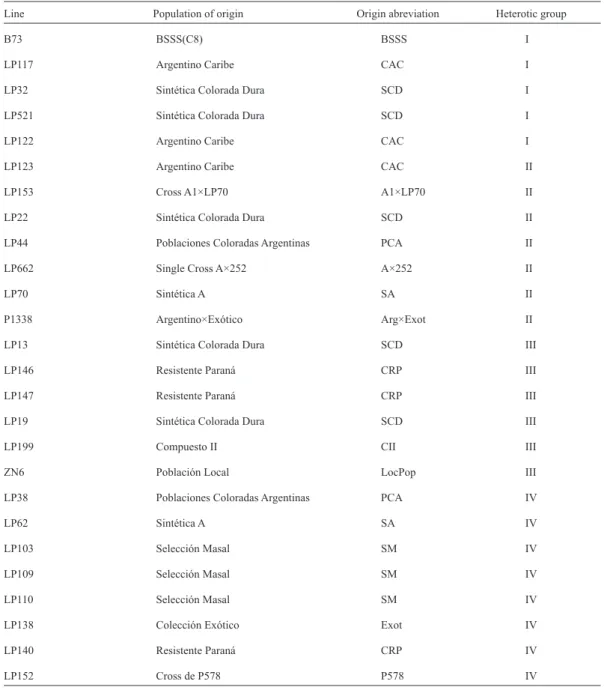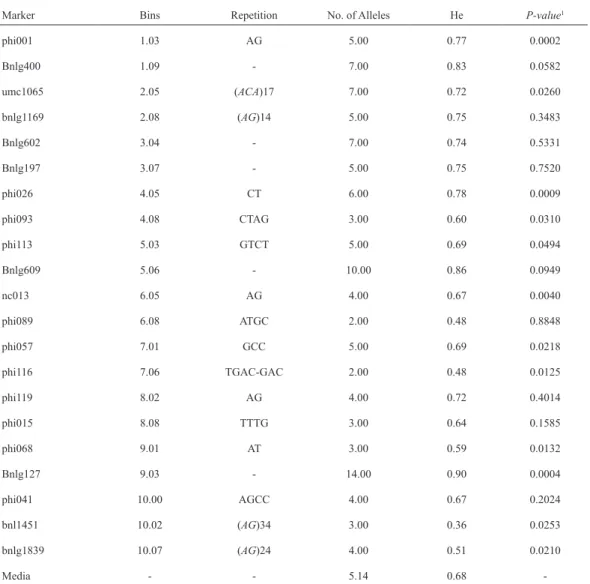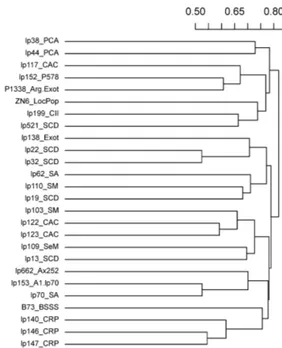Analysis of genetic diversity in Argentinian heterotic maize populations using molecular markers
Texto completo
Figure




Documento similar
Putative sig- nals of recent selection between CHCU and CHA were identified and genes mapping within those regions reflect different selection emphasis/functions related to
The Dwellers in the Garden of Allah 109... The Dwellers in the Garden of Allah
Genetic diversity for both drought-induced and drought- repressed genes was high; however, the differences in average gene diversity between central and peripheral po- pulations
each variety a wide range of variation in mean fruit weight among different populations was
genetic diversity even without having any knowledge of the bare existence of it (Harlan, 1992). Nevertheless, classic breeding has limitations. It was not until the “Green
The objectives of this work were to design a microsatellite panel for biodiversity to study the genetic characterization and to analyze the diversity and intrapopulation structure of
Moroccan durum wheat landraces hold large genetic variability and considerable number of alleles with 11. the probability of having some of these alleles associated with
Statistically significant differences in the profiles of antimicrobial susceptibility and genetic diversity (PFGE) of Trueperella pyogenes have been detected between